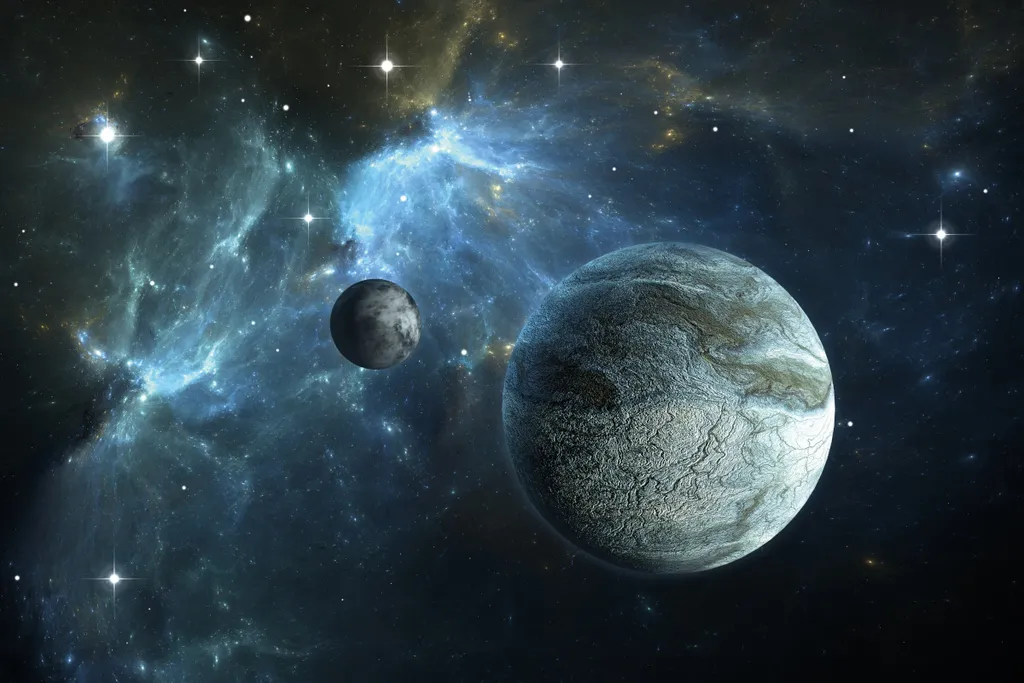The ocean is Earth’s final frontier, a realm so vast and unexplored that even today, we know more about the surface of Mars than we do about the depths of our own seas. Covering over 70% of the planet, the oceans hold mysteries, secrets, and wonders beyond imagination. Beneath the crashing waves lies an alien world of eternal darkness, crushing pressures, and strange forms of life that defy all expectations.
Over the past century, scientific expeditions, deep-sea submersibles, and modern technologies have peeled back the veil of this hidden world, revealing astonishing discoveries. From glowing creatures to colossal geological structures, the ocean depths continue to challenge our understanding of Earth and life itself.
Here are 15 of the most amazing discoveries ever found deep in the ocean—each one a story of wonder, science, and the enduring human quest to explore the unknown.
1. Hydrothermal Vents – Underwater Cities of Fire and Life
In 1977, scientists exploring the Galápagos Rift discovered something that changed biology forever: hydrothermal vents. These fissures on the seafloor spew superheated, mineral-rich water, creating towering black “smokers” that look like chimneys. Temperatures can exceed 400°C, yet instead of being barren, these environments teem with life.
Here, strange ecosystems exist without sunlight. Giant tube worms, clams, shrimp, and crabs thrive by relying on chemosynthesis—microbes that convert toxic chemicals into energy. This was the first time scientists discovered a form of life independent of the sun, expanding our understanding of what life is and where it could exist, even on other planets.
2. The Mariana Trench – The Deepest Place on Earth
The Mariana Trench in the Pacific Ocean is the deepest known part of Earth’s oceans, plunging nearly 11 kilometers (7 miles) into the abyss. It is deeper than Mount Everest is tall. In 1960, Jacques Piccard and Don Walsh made history by descending into the Challenger Deep, the trench’s deepest point. Since then, only a handful of explorers—including filmmaker James Cameron—have visited this alien world.
Despite the crushing pressures and eternal darkness, scientists have found microbial life, strange amphipods, and even organisms feeding on chemicals. The trench is a reminder that even in the harshest conditions, life finds a way.
3. Bioluminescent Creatures – The Ocean’s Living Lights
Imagine a world where animals glow in the dark. In the deep ocean, this is not fantasy but everyday reality. Bioluminescence—the production of light by living organisms—is one of the most spectacular adaptations in nature.
From tiny plankton that make waves sparkle at night to anglerfish dangling glowing lures to attract prey, bioluminescence is used for hunting, camouflage, communication, and even mating. Some squid create dazzling displays to confuse predators, while certain jellyfish glow like underwater lanterns.
The discovery of these luminous creatures not only amazes us but also gave science one of its most powerful tools: the green fluorescent protein (GFP), now essential in medical and genetic research.
4. The Titanic Wreck – A Sunken Time Capsule
In 1985, Robert Ballard and his team located the wreck of the RMS Titanic, lying 3,800 meters beneath the Atlantic Ocean. The legendary ship, which sank in 1912 after hitting an iceberg, had remained lost for over 70 years.
The discovery of the Titanic was both haunting and historic. Preserved by the cold, dark waters, the wreck revealed details about the tragedy and provided a unique glimpse into the past. Though parts of the ship are slowly decaying due to metal-eating bacteria, the Titanic remains one of the most famous and poignant deep-sea discoveries of all time.
5. Deep-Sea Gigantism – Monsters of the Abyss
One of the strangest phenomena of the deep is deep-sea gigantism, where certain animals grow to enormous sizes. Scientists have found giant isopods as large as dinner plates, colossal squid with eyes the size of basketballs, and enormous amphipods.
Why do creatures grow so large in the deep? Theories include cold temperatures, high pressure, and scarce food resources favoring larger body sizes. Whatever the reason, these oversized organisms fuel both science and myth, echoing tales of sea monsters told for centuries.
6. The Lost City Hydrothermal Field – Towers of Stone and Life
Discovered in 2000 in the mid-Atlantic, the Lost City Hydrothermal Field stunned scientists with its towering carbonate chimneys rising up to 60 meters high. Unlike black smokers, the Lost City vents emit alkaline fluids, creating conditions where life flourishes on methane and hydrogen.
Some scientists believe environments like the Lost City could resemble the cradle of life on Earth billions of years ago. It may even provide a model for how life could emerge on icy moons like Europa and Enceladus.
7. The Giant Squid – A Real-Life Sea Monster
For centuries, sailors told stories of terrifying sea monsters, but it wasn’t until 2004 that scientists captured the first images of a living giant squid in its natural habitat. These elusive creatures can grow up to 13 meters long, with eyes so large they can detect faint light in the pitch-black ocean.
The discovery of the giant squid in the wild was a triumph of patience, technology, and human curiosity. It proved that the legends of the Kraken had a real-world counterpart—though far less monstrous, it remains one of the ocean’s most mysterious animals.
8. Methane Hydrates – Ice That Burns
Deep beneath the ocean floor, scientists have discovered strange deposits known as methane hydrates—crystalline structures of water and methane gas. At first glance, they look like ice, but when lit, they can burn like fire.
These hydrates may hold more carbon than all known fossil fuels combined, making them a potential energy source. However, they also pose environmental risks, as sudden releases of methane could accelerate climate change. This discovery highlights both the promise and peril hidden in the deep.
9. Deep-Sea Coral Forests – Ancient Underwater Gardens
While shallow coral reefs are well-known, scientists have discovered vast deep-sea coral forests thriving in darkness, some at depths of over 2,000 meters. Unlike tropical corals, these cold-water corals do not rely on sunlight. Instead, they filter nutrients drifting in the currents.
Some of these corals are thousands of years old, serving as living time capsules of ocean history. They provide vital habitats for countless species, yet remain vulnerable to deep-sea trawling and climate change. Their discovery shows that beauty and biodiversity exist even in the ocean’s hidden depths.
10. Brine Pools – Lakes at the Bottom of the Sea
One of the most surreal discoveries in oceanography is the existence of brine pools, also known as “underwater lakes.” These dense, salty pools form on the ocean floor, creating distinct shorelines and waves beneath the sea.
Brine pools are lethal to most marine life, yet unique organisms thrive around their edges. The bizarre sight of lakes within the ocean challenges our perception of what underwater landscapes can be and reveals nature’s endless creativity.
11. The Bloop – A Mysterious Sound from the Deep
In 1997, NOAA scientists detected an ultra-low frequency sound in the Pacific Ocean, nicknamed “the Bloop.” The sound was so loud it could be heard across thousands of kilometers of ocean. For years, people speculated whether it was a giant sea creature or an unknown natural phenomenon.
Later studies suggested the Bloop was likely the sound of massive icebergs fracturing, but the mystery captivated imaginations worldwide. It remains a reminder that the ocean still holds acoustic secrets, many of which are yet to be explained.
12. Underwater Volcanoes – Fire in the Abyss
Beneath the ocean’s surface lie thousands of underwater volcanoes, many larger than those on land. Some of these volcanoes are still active, spewing lava and gases into the dark depths. In fact, more than 80% of volcanic activity on Earth occurs underwater.
These volcanoes shape the seafloor, create new land, and support unique ecosystems. Discoveries of thriving life around volcanic vents have reshaped our understanding of how resilient and adaptable organisms can be.
13. Zombie Worms – The Bone-Eaters of the Deep
In 2002, scientists discovered one of the strangest creatures ever found: Osedax, also known as “zombie worms.” These bizarre worms feed on the bones of dead whales that fall to the seafloor, secreting acid to bore into them.
Lacking mouths and stomachs, zombie worms rely on symbiotic bacteria to digest the nutrients. Their discovery revealed an entire ecosystem based on “whale falls” and showed how even death sustains life in the deep ocean.
14. The Baltic Sea Anomaly – A Mystery Beneath the Waves
In 2011, Swedish treasure hunters discovered a strange, 60-meter-wide formation at the bottom of the Baltic Sea. Dubbed the Baltic Sea Anomaly, it looks like a massive stone structure, leading to wild speculations—from natural rock formation to World War II artifact to even alien technology.
Although most scientists believe it is a natural geological formation, the anomaly continues to intrigue researchers and explorers, proving that the ocean still hides secrets waiting to be explained.
15. Plastic Pollution in the Deepest Trenches
Perhaps the most sobering discovery is not a natural wonder but a human-made tragedy. In recent years, scientists have found plastic waste in the Mariana Trench, the deepest part of the ocean. From plastic bags to microplastics, our pollution has reached even the most remote, inhospitable environments on Earth.
This discovery is a stark reminder that human activity affects every corner of the planet. It challenges us to rethink our relationship with the ocean and inspires urgent action to protect its fragile ecosystems.
Conclusion
The deep ocean is a place of extremes—darkness, pressure, and isolation—yet it is also a place of incredible beauty, mystery, and discovery. From glowing creatures to ancient corals, from hydrothermal vents to colossal squids, the ocean depths remind us that we live on a planet far more extraordinary than we often realize.
And yet, we have only explored about 5% of the ocean. The discoveries made so far are just the beginning. With every expedition, new mysteries emerge, pushing the boundaries of science and igniting our imagination. The deep sea is not just the Earth’s final frontier—it may also hold the keys to understanding life itself, both on this planet and beyond.






